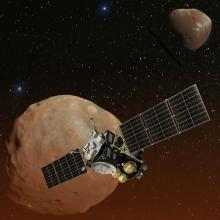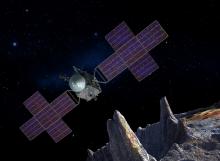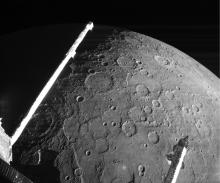Listen to today's episode of StarDate on the web the same day it airs in high-quality streaming audio without any extra ads or announcements. Choose a $8 one-month pass, or listen every day for a year for just $30.
You are here
Hangin’ Around
The space close to Earth is getting crowded. It’s filling up with spacecraft, old rocket stages, and lots of other debris.
The space a million miles behind Earth is getting crowded, too. It’s filling up with space telescopes.
That point is known as L2. The gravity of Earth and the Sun are balanced there. So any spacecraft that goes there stays there. It’s a good spot for telescopes because their view isn’t blocked by Earth. They can be kept cooler there, too. That allows them to study some of the coldest objects in the universe.
In the last decade or so, several observatories have been sent to L2. That includes Gaia, a European craft that’s plotting the positions of more than a billion stars.
Several more observatories are scheduled to head that way soon. The biggest is James Webb Space Telescope — the biggest and most expensive space telescope ever built. It’ll study the infrared sky, so it needs to get away from the glowing Earth. Launch is planned for 2021.
A Russian craft will head for L2 next spring. Known as SRG, it’ll study galaxy clusters and map the structure of the universe. It’ll also look for black holes and the remnants of exploded stars.
And another European mission, Euclid, will join the others in 2021. It’s designed to study dark energy and dark matter. It’ll look toward intergalactic space — with no Earth to block the view.
We’ll talk about a craft that’ll go even farther tomorrow.
Script by Damond Benningfield





